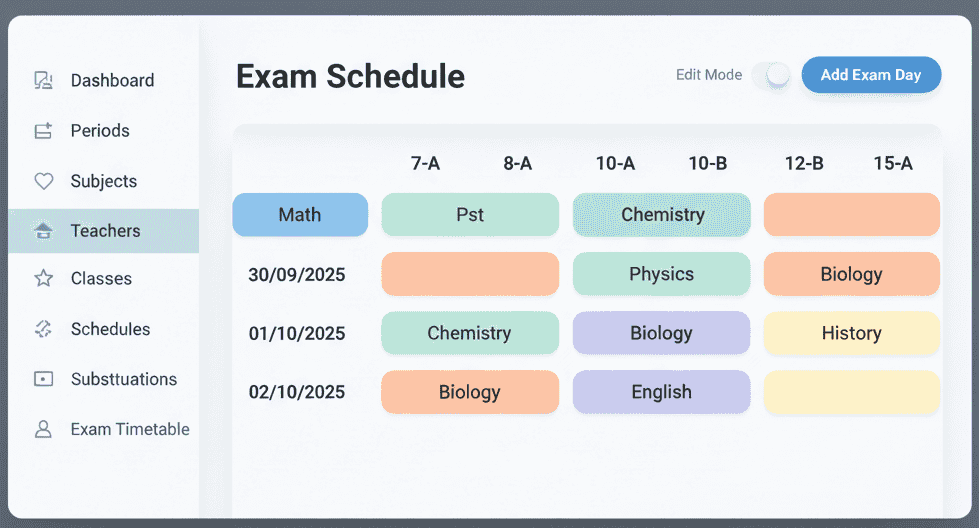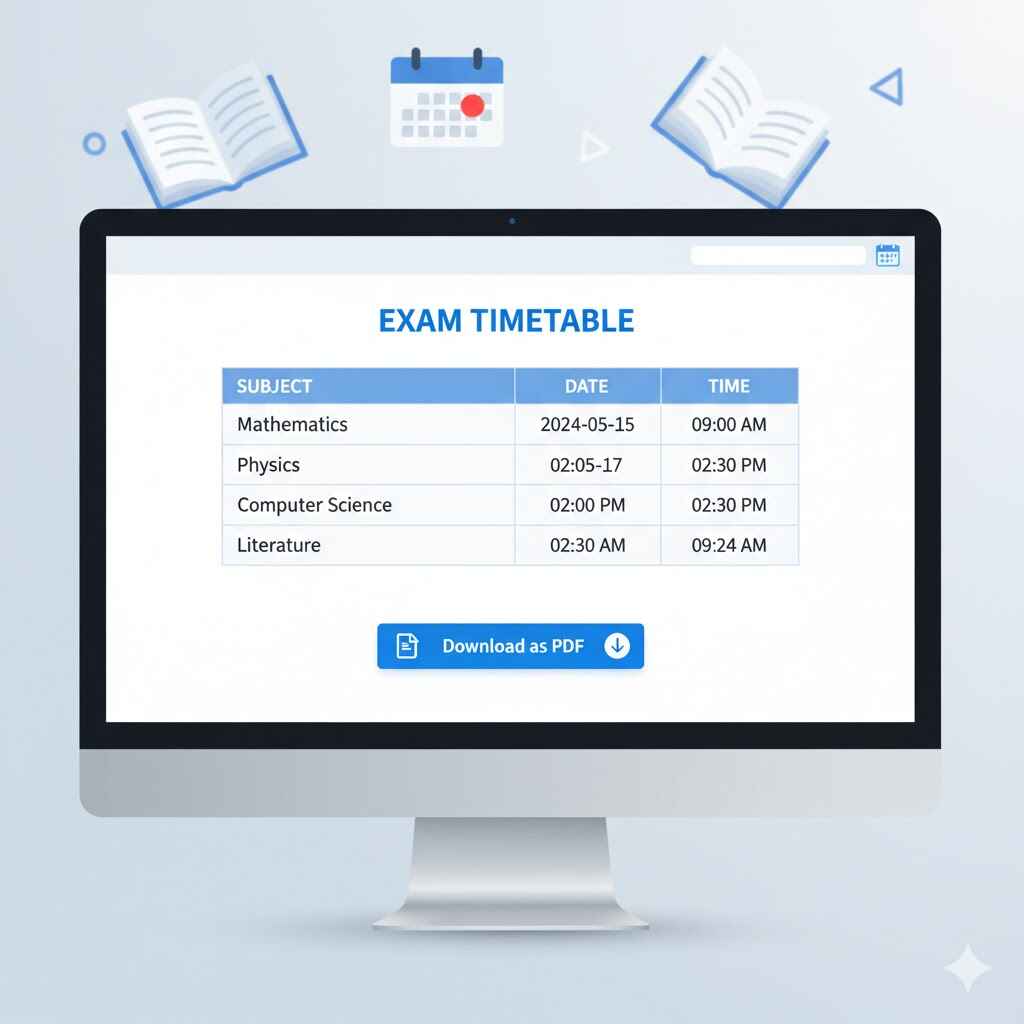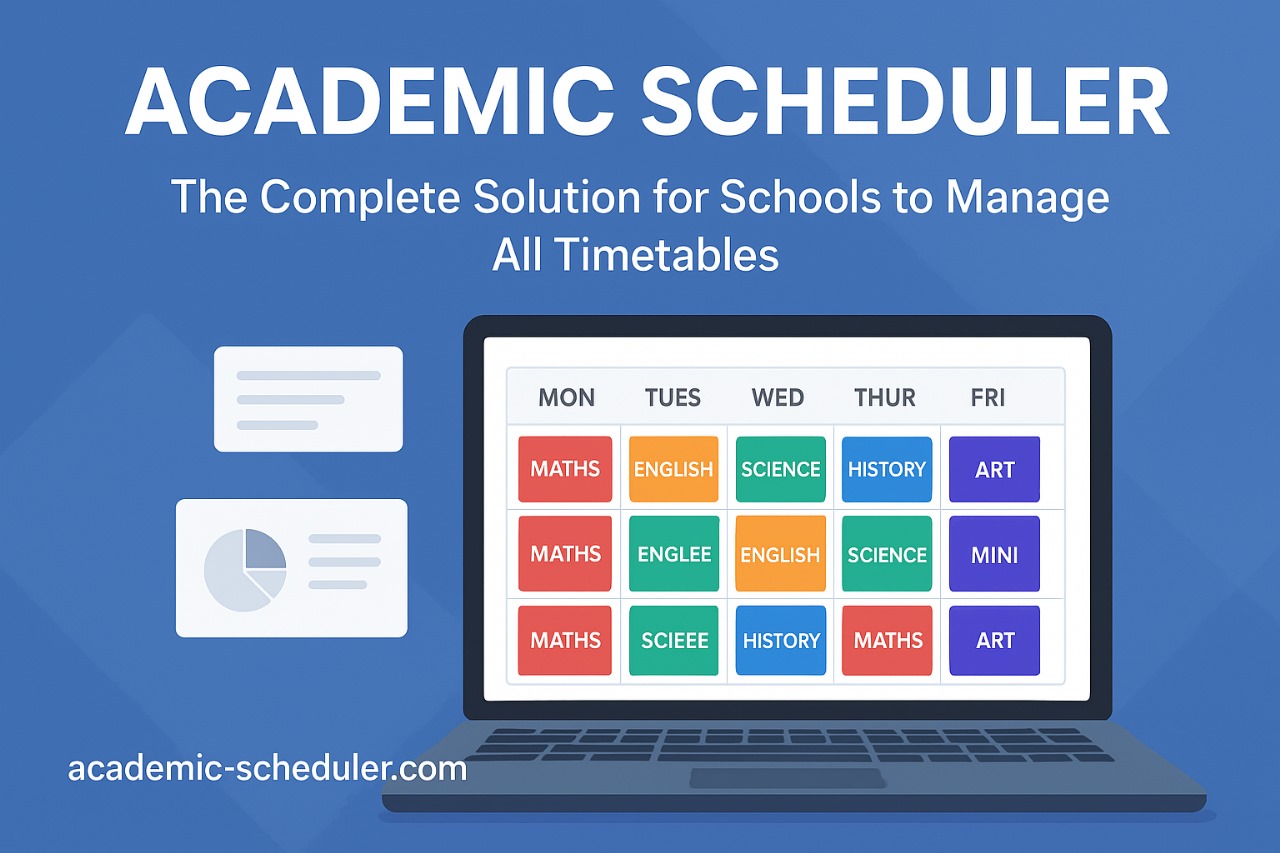Managing exam schedules across multiple classes and subjects can be one of the most challenging administrative tasks in educational institutions. A well-designed exam timetable ensures fair distribution of exams, prevents scheduling conflicts, and reduces student stress.
The Importance of Strategic Exam Scheduling
Creating an exam schedule isn't just about fitting subjects into time slots. It's about understanding the academic flow, recognizing student workload, and ensuring teachers have adequate time for preparation and grading. Modern schools use specialized scheduling systems to coordinate complex timetables across different grade levels, from elementary classes through senior years.
Key Components of a Successful Exam Schedule
1. Visual Organization and Color Coding
Visual clarity is essential for exam schedules. Using distinct colors for different subjects helps students, teachers, and administrators quickly identify exam slots at a glance. For instance, science subjects like Chemistry, Physics, and Biology might use complementary color schemes, while humanities subjects like English and History use different palettes.
2. Balanced Subject Distribution
A well-structured exam schedule distributes subjects strategically across exam days. Avoid clustering challenging subjects like Mathematics, Physics, and Chemistry on consecutive days. Instead, alternate between technical and theoretical subjects to give students adequate preparation time for each exam.
3. Multi-Class Coordination
When scheduling exams for multiple classes simultaneously, consider resource allocation including examination halls, invigilators, and support staff. The schedule should accommodate different class levels (7-A, 8-A, 10-A, 10-B, 12-B, 15-A) without creating conflicts in shared resources.
Best Practices for Exam Timetable Creation
Start with Core Subjects
Begin scheduling with mandatory core subjects like Mathematics, Sciences, and Languages. These subjects typically require the longest duration and most resources, so securing their slots first provides a framework for arranging elective subjects.
Consider Teacher Availability
Cross-reference your exam schedule with teacher timetables. Ensure that subject teachers are available during their respective exam slots for last-minute clarifications and supervision duties.
Build in Buffer Time
Include rest days between major exams. This gives students time to prepare adequately and reduces examination fatigue. Spacing exams across dates like September 30, October 1, and October 2 provides natural breaks in the schedule.
Plan for Contingencies
Always maintain flexibility in your schedule for unexpected situations. Leave some exam slots available for rescheduling in case of emergencies, school closures, or other unforeseen circumstances.
Digital vs. Manual Scheduling Systems
While traditional manual scheduling methods work for smaller institutions, digital exam scheduling platforms offer significant advantages. Automated systems can detect scheduling conflicts, optimize resource allocation, and generate schedules that would take hours to create manually. Features like drag-and-drop interfaces, automatic conflict detection, and instant updates make digital platforms invaluable for modern educational administration.
Managing Subject-Specific Scheduling Needs
Science Subjects (Chemistry, Physics, Biology)
Science exams often require specialized equipment and laboratory access. Schedule these exams with consideration for practical components and ensure laboratories are available for hands-on assessments.
Language and Humanities (English, History, Pst)
These subjects typically involve essay writing and longer examination periods. Ensure adequate time allocation and consider student writing fatigue when scheduling multiple language exams.
Mathematics
Mathematics exams require intense concentration and problem-solving. Schedule these exams earlier in the day when students are mentally fresh, and avoid placing them after other analytically demanding subjects.
Communication and Accessibility
Once the exam schedule is finalized, make it accessible to all stakeholders. Display it prominently in common areas, share it through digital platforms, and ensure students, parents, and teachers can easily access it. Clear communication about exam dates, times, and venues prevents confusion and last-minute surprises.
Periodic Review and Optimization
After each examination period, gather feedback from students, teachers, and administrators. Use this feedback to identify areas for improvement in future schedules. Track patterns in student performance and stress levels to understand how exam spacing affects outcomes.
Leveraging Technology for Better Scheduling
Modern exam scheduling platforms like Academic Scheduler streamline the entire process. These systems allow administrators to view schedules by class, subject, or date, make real-time adjustments, and automatically notify stakeholders of changes. The ability to manage periods, subjects, teachers, classes, and substitutions from a centralized dashboard transforms exam scheduling from a complex puzzle into a manageable administrative task.
Conclusion
Creating an effective exam schedule requires careful planning, clear communication, and the right tools. By following best practices in subject distribution, resource allocation, and stakeholder communication, schools can create exam timetables that support student success while maintaining operational efficiency. Whether you're scheduling exams for a handful of classes or coordinating complex multi-grade schedules, a systematic approach combined with modern scheduling tools ensures smooth examination periods and better outcomes for everyone involved.
Ready to Simplify Your Exam Scheduling?
Discover how Academic Scheduler can help you create, manage, and optimize exam timetables with ease. Start streamlining your school's examination process today.
Try Academic Scheduler Free




